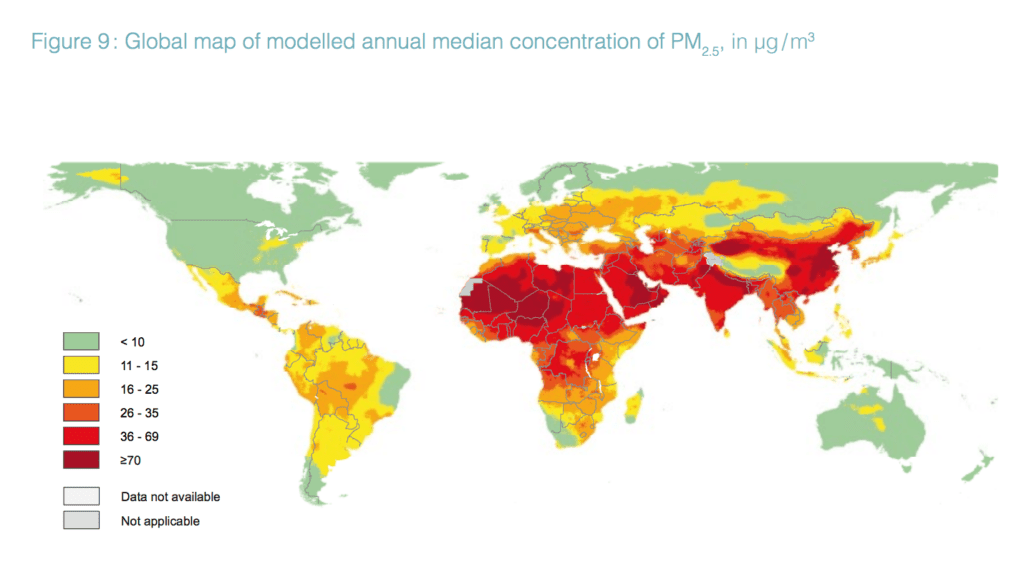A new report by the World Health Organization (WHO) showed some chilling numbers: 92% of the world’s population lives in areas with air pollution above safe levels.

Air pollution continues to be a crucial global problem. It’s messing with the bees, it’s making you fat then killing you in the bargain — and it’s getting worse, the WHO reports. A report released by the organization today reveals that 92% of humans live in places with air pollution levels above what’s considered healthy. They have previously looked at conditions on a city-by-city level.
The most damaging air pollutant to humans is called PM 2.5, or particulate matter under 2.5 microns in diameter. These particles can get lodged in the lungs’ areolas, causing long-term damage which can lead to asthma and chronic lung diseases. It’s found in soot, smoke, and dust.
While it’s not something you want to breathe at all, it starts to become a major health issue when PM 2.5 levels exceed 35.5 micrograms (µg) per cubic meter of air, according to the US Environmental Protection Agency. The WHO recommends keeping the average level three times lower than that concentration to make sure your lungs remain crispy clean, however.
Sadly, air today has a much higher mean concentration of PM 2.5. Here’s a map the organization put together of average levels of the particles. Green areas correspond to levels that are considered healthy by WHO standards.

Image credits World Health Organization.
WHO attributes 3 million deaths each year to air pollution, and most of these deaths occur in low- and middle-income countries.
“The new WHO model shows countries where the air pollution danger spots are, and provides a baseline for monitoring progress in combatting it,” WHO Assistant Director General Dr Flavia Bustreo said in a news release.
So, where do you fall in on the map? I’m an Orange myself. Bummer.






